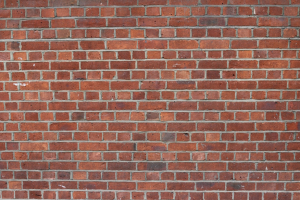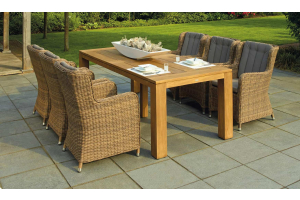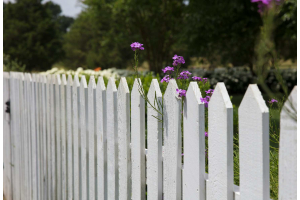
Knowing how to lay decking on uneven ground sounds difficult in theory, but in reality, it isn’t as complicated as you may think. It requires the right tools, materials, and a bit of planning.
It could be a gently sloping garden or a steeper incline, regardless, we will will walk you through laying decking on uneven ground, step by step.
Do You Need Level Ground to Build Decking?
No. While a level base will make life easier, it’s absolutely possible to build a secure deck on sloped or uneven terrain. The key is to create a level frame using either ground anchored posts or adjustable pedestals to support your timber decking boards or composite decking.
Don’t forget: You’ll need to account for water runoff too, decking should slope slightly away from your home at around a 2.5% gradient.
Planning for a Sloped Deck
Before you start digging, plan your layout carefully. Mark out the area, factor in expansion gaps (around 6mm), and decide whether you’ll need decking steps or a multi-level design.
Measure your slope and consider whether posts or pedestals are more suitable. Posts are generally more cost effective and can be sunk into soil using concrete. Pedestals, on the other hand, are quicker to install on solid ground like concrete.
Check if planning permission is needed. As a rule of thumb, if the deck stands more than 30cm above ground or covers over 50% of your garden, it’s worth contacting your local council.
Tools & Materials You Might Need
Decking Components:
Decking boards (timber or composite)
Posts or adjustable pedestals
Joists and hangers
Concrete mix and gravel
Fixings (screws, clips, bolts)
Tools:
Cordless drill
It’s quite possible you have most of these tools already, if not, it’s they’re not hard to find and are readily available at any timber and builders merchant. You can find everything you need in our Landscaping & Gardening and Tools & Workwear departments.
How to Build Decking on a Slope (Step-by-Step)
1. Prepare the Ground
Clear away foliage and dig around 50mm into the soil to remove turf. If you're building on soil, add a gravel layer for drainage. Use string and pegs to mark out the footprint.
2. Set the Posts
Dig holes for your posts at 1.5m intervals in a grid pattern. Sink the posts at least a quarter of their length into the ground and secure with concrete. Use a spirit level to ensure they are perfectly upright.
If you're working with concrete ground, you can use post base plates and anchors instead.
3. Install the Frame
Start at the highest point of the slope. Connect outer joists to the posts with structural screws or bolts. Then install the inner joists using joist hangers, spaced 300–450mm apart depending on board orientation.
4. Add Steps (If Needed)
For steeper slopes, steps will help access and safety. Use stringers attached to your subframe and fit decking boards across them. Add fascia boards to neaten the edges.
5. Lay the Decking Boards
Begin at one corner and work row by row. Use starter clips or screws, and leave 5–8mm expansion gaps. Stagger boards for strength and visual appeal. Use trims or fascias for a clean finish.
Closing Tips
A few key takeaways to remember when learning how to lay decking on uneven ground:
Always leave a 25mm expansion gap between decking and any walls or buildings.
Direct surface runoff away from the house to prevent water pooling.
If working with a steep incline, or you aren’t confident, get the professionals in.
Need materials fast? We offer local delivery and click & collect services. You can also get in touch with our team if you’ve got questions before you start your project.





